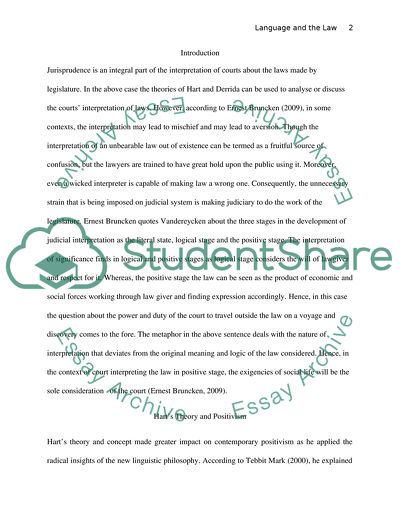Cite this document
(Duty of the Court and its Interpretation of Legislature Coursework, n.d.)
Duty of the Court and its Interpretation of Legislature Coursework. Retrieved from https://studentshare.org/law/1723137-the-duty-of-the-court-is-to-interpret-the-words-that-the-legislature-has-used-the-power-and-duty-of-the-court-to-travel-outside-them-on-a-voyage-of-discovery-are-strictly-limited-discuss-the-views-of-the-2-theorists-hart-and-derrida-of-the-quote
Duty of the Court and its Interpretation of Legislature Coursework. Retrieved from https://studentshare.org/law/1723137-the-duty-of-the-court-is-to-interpret-the-words-that-the-legislature-has-used-the-power-and-duty-of-the-court-to-travel-outside-them-on-a-voyage-of-discovery-are-strictly-limited-discuss-the-views-of-the-2-theorists-hart-and-derrida-of-the-quote
(Duty of the Court and Its Interpretation of Legislature Coursework)
Duty of the Court and Its Interpretation of Legislature Coursework. https://studentshare.org/law/1723137-the-duty-of-the-court-is-to-interpret-the-words-that-the-legislature-has-used-the-power-and-duty-of-the-court-to-travel-outside-them-on-a-voyage-of-discovery-are-strictly-limited-discuss-the-views-of-the-2-theorists-hart-and-derrida-of-the-quote.
Duty of the Court and Its Interpretation of Legislature Coursework. https://studentshare.org/law/1723137-the-duty-of-the-court-is-to-interpret-the-words-that-the-legislature-has-used-the-power-and-duty-of-the-court-to-travel-outside-them-on-a-voyage-of-discovery-are-strictly-limited-discuss-the-views-of-the-2-theorists-hart-and-derrida-of-the-quote.
“Duty of the Court and Its Interpretation of Legislature Coursework”, n.d. https://studentshare.org/law/1723137-the-duty-of-the-court-is-to-interpret-the-words-that-the-legislature-has-used-the-power-and-duty-of-the-court-to-travel-outside-them-on-a-voyage-of-discovery-are-strictly-limited-discuss-the-views-of-the-2-theorists-hart-and-derrida-of-the-quote.


